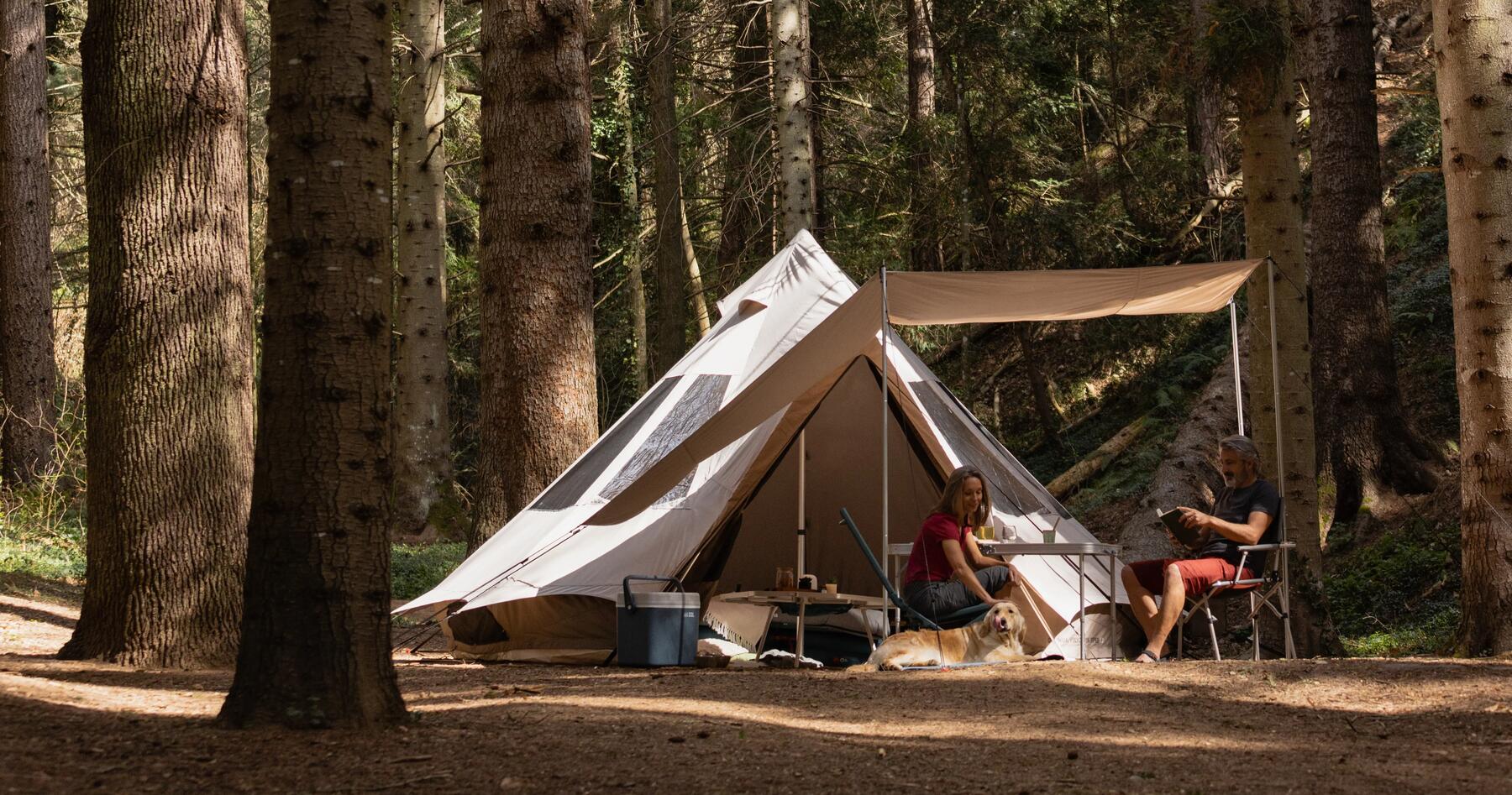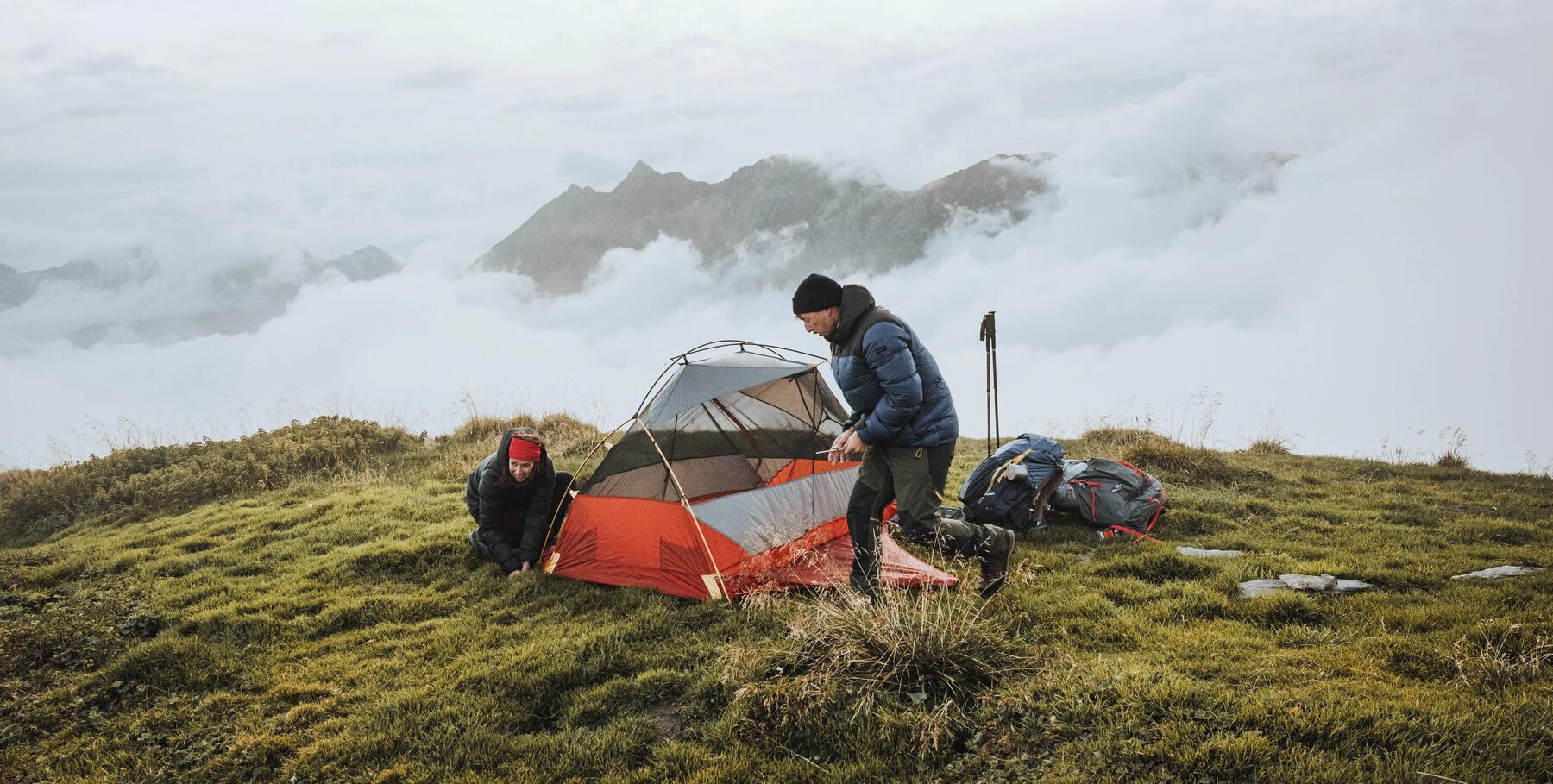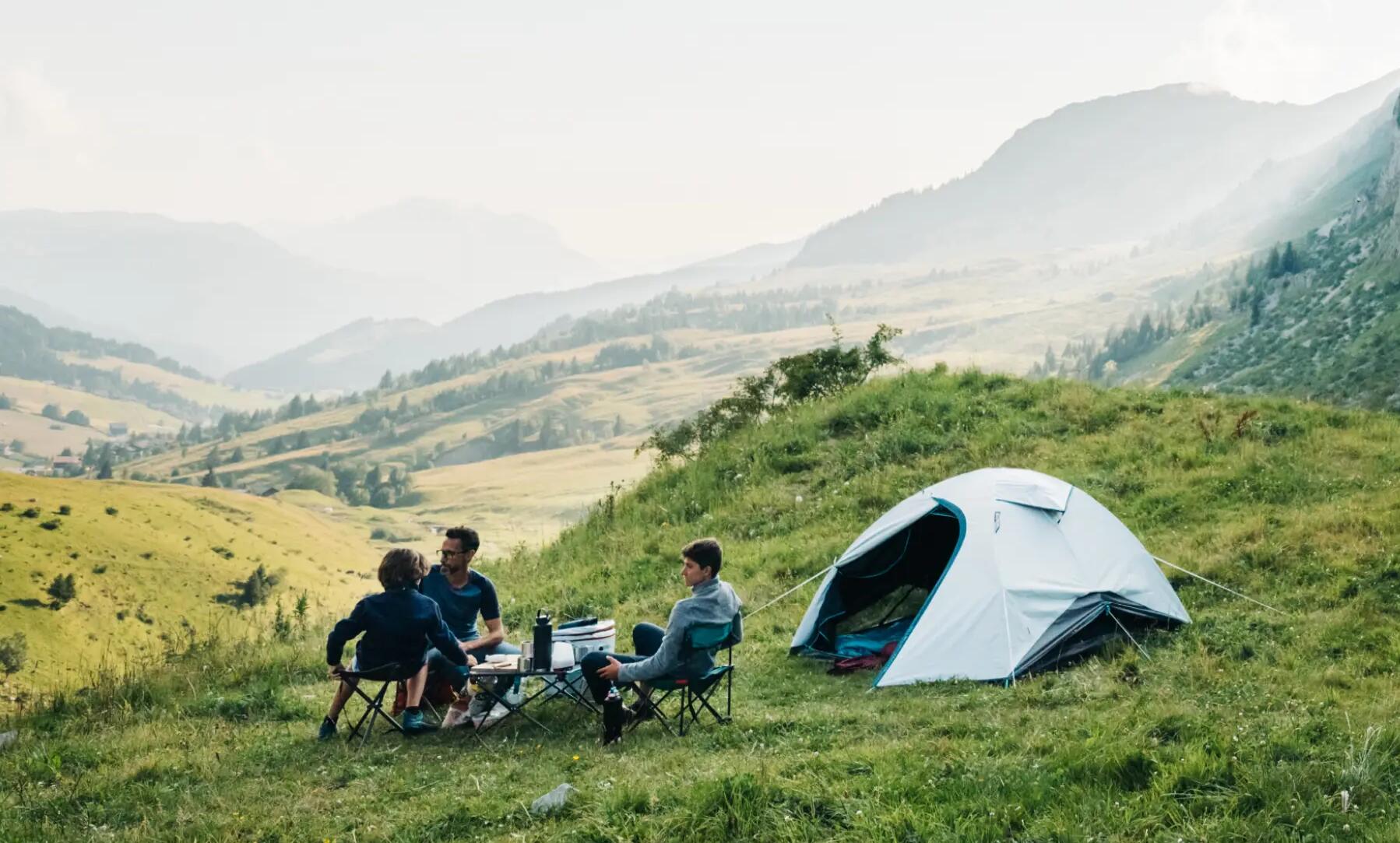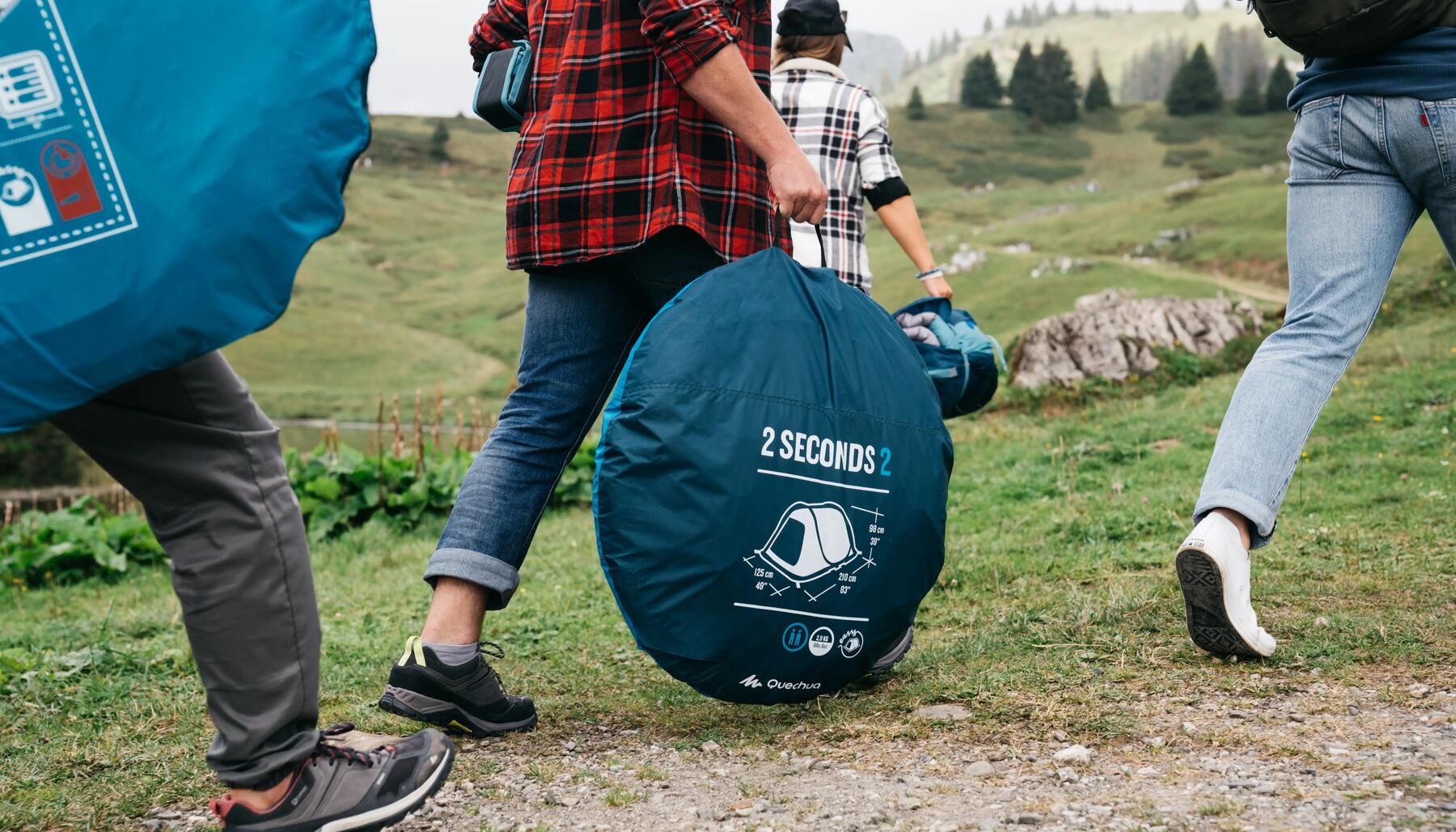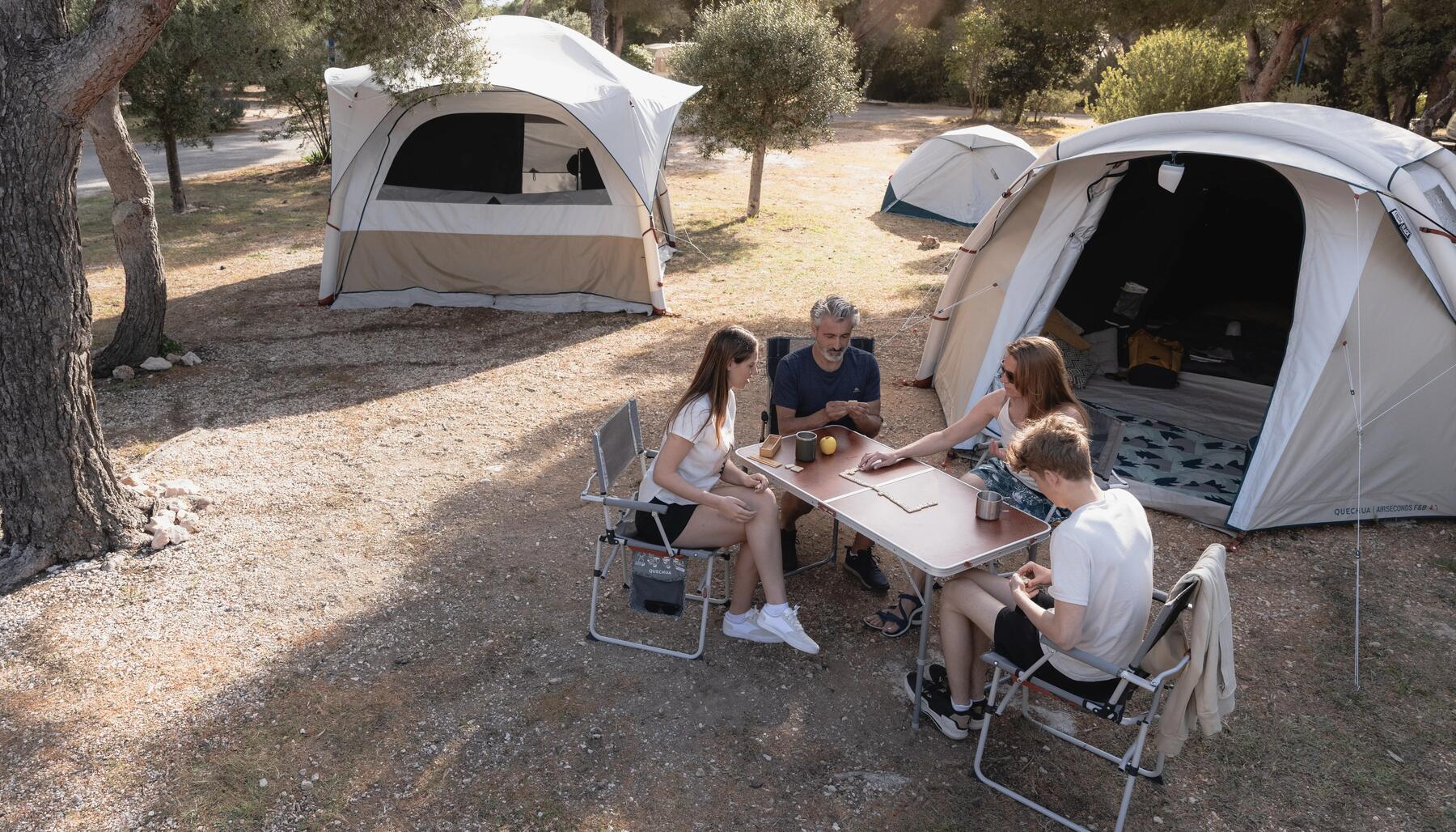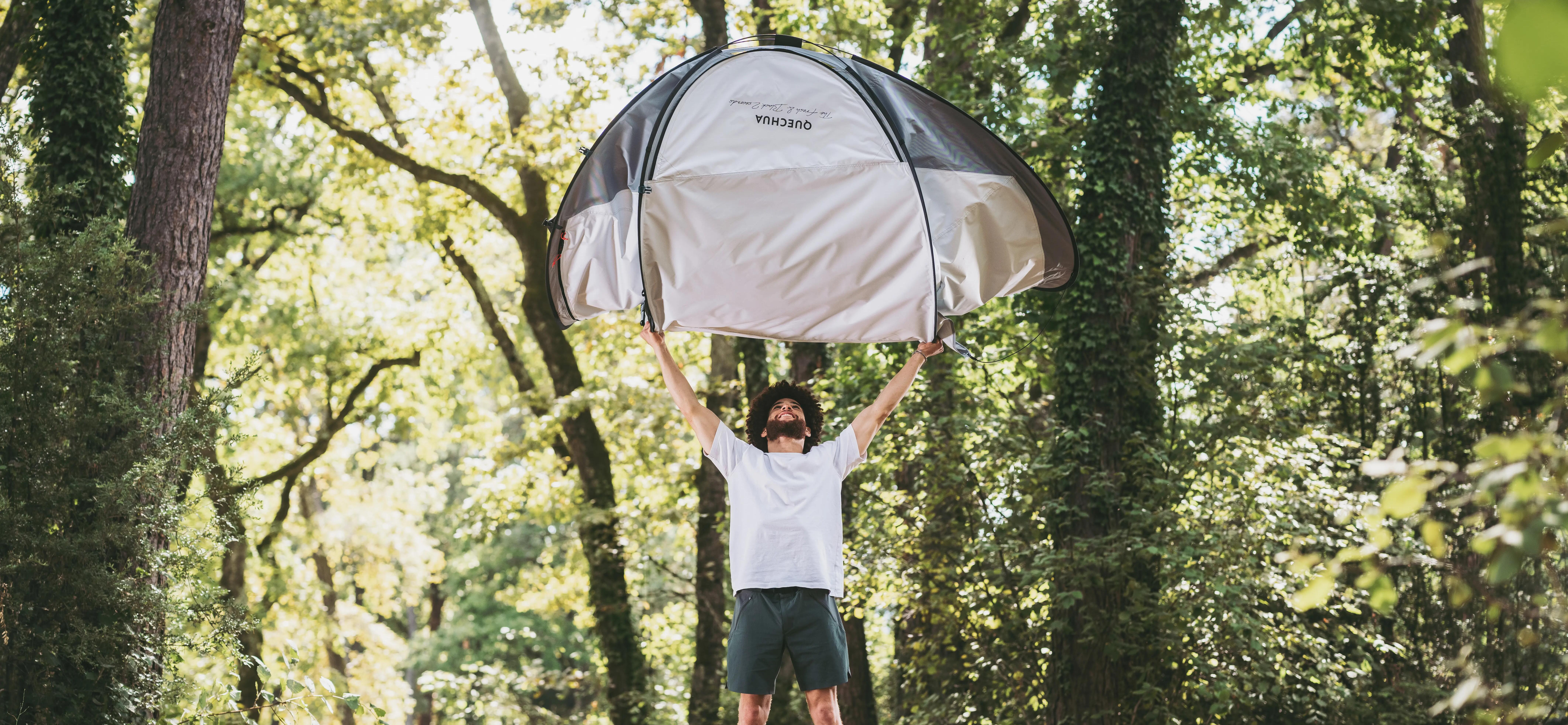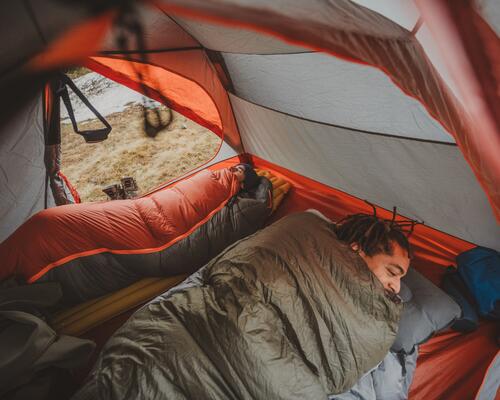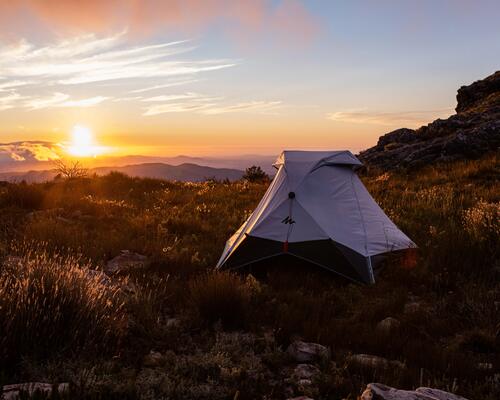Which tent is ideal for camping, hiking, trekking or a road trip?
You don’t intend to go walking with your tent: how do you choose a camping tent?
You don't need to carry your tent on your back and you're pitching a "static" camp. The weight of your equipment will be much less important. So you can prioritise space and comfort by taking a camping tent. They generally have a living space or a rest area. You can therefore cook there, eat there, take shelter in the event of rain and of course sleep there. It's the best choice if you intend staying for several days in the same place, or if you don't have to walk very far with it. There are different options available, and your choice can be made depending on the number of beds required and type of pitching you prefer.

